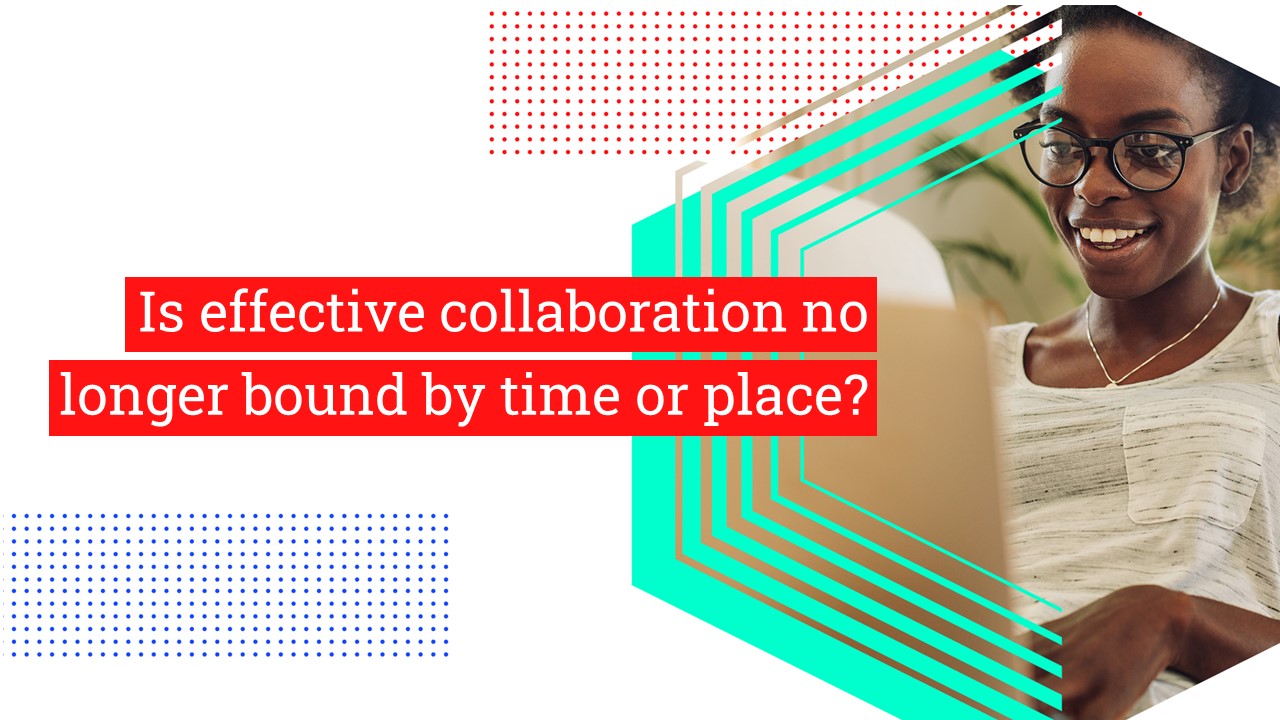The world of work is rapidly evolving and with it are the habits and behaviours we see in the workplace. Collaboration is critical for any business to operate successfully but if the collaboration we've grown accustomed to over the past two years is here to stay, how do we optimise our modes of collaboration and working styles for the digital workplace of the future?
Interactions are increasingly scheduled and more commonly occur through a screen rather than a spontaneous chat in the office kitchen making a cup of coffee. As work evolves away from a singular place to increasingly embody an activity that can be done anywhere, impromptu conversations and interactions are occurring less. A study from Queen’s University of Charlotte has shown that roughly 75% of employees regard collaboration and teamwork as important, and interestingly 39% felt their company could collaborate more. Whilst serendipitous interactions within a remote workforce may be difficult for businesses to manufacture, businesses can still empower employees to collaborate.
Collaboration doesn’t have to be location led
The reality is that most businesses are likely to maintain at least some form of flexible working for the future. With a rise in borderless teams where they may always be an online element to interactions, businesses need to offer more options for how, when and where they collaborate in a digital workplace. Research from Gartner shows that teams who collaborate intentionally are nearly three times more likely to achieve high levels of innovation than those that don’t use an intentional approach. Leaders need to help create intentional collaboration moments to empower employees to innovate with confidence, leveraging the benefits of the digital workplace to do so.
The intentional collaboration model from Gartner highlights the importance of not only considering location as a factor in collaboration style and opportunity but critically the type of work that is being done. The result is four work modes that need to be equally invested in:
- Working together, together – co-located teams contributing to a meeting in a shared space
- Working together, apart – co-located teams contributing to a meeting in a virtual space
- Working alone, together – teams in shared spaces but not working on things at the same time
- Working alone, apart – distributed teams with individuals doing deep focus work
It may be tempting for businesses to reflexively assume that co-located teams will be the most productive, however by democratising all work modes they can create a more inclusive approach better suited to borderless, work anywhere teams.
An important concept for leaders to note is that work done alone is just as important as work done together for collaboration. An overreliance on working together, whether it is in person or virtual meetings, can lead to innovation stagnation in much the same way as a lack of collaboration opportunities can. Leaders need to take a balanced approach that allows employees time and space to conduct deep focus work to be able to better contribute when it comes to team opportunities. By avoiding replicating the onsite office in virtual work, businesses can create hybrid teams with intentional collaboration opportunities.
Empowering employee collaboration
The key is to achieve a healthy balance of working together and working alone, encouraging a people-centric, location-agnostic approach to collaboration.
Intentional collaboration is a continual process that needs to be modelled by senior leadership and encouraged throughout an organisation. By building a digital workplace for the modern workforce businesses can embed supporting platforms and processes into the culture from the start.
To ensure seamless productivity in your digital workplace you need to empower employees, whilst measuring the effectiveness of your collaboration efforts against best practice. Your approach should be:
- Balanced – balance business productivity with empowerment
- Holistic – Take a more holistic view combining the physical with digital
- Aligned – break down geographic and hierarchical barriers to align both business and employee vision and values
- Inclusive – foster creativity and contribution with insights and innovation
- Evolving – continually transform the operating model driving inclusive behaviours and culture
Build a collaborative workplace for the future
As the workplace evolves it is important to cater to all working styles while supporting your processes and culture. Employees who are digital natives want to be less bound by physical locations than ever before and are looking for businesses that adopt solutions that are focused on empowering people, while older generations may still rely on email and phone as their collaborative tools of choice. The key to success is empowering individuals, offering communication and collaboration no matter where they are.
Instilling intentional collaboration into your business through a scorecard approach, enabled by modern technology offers the benefits of ‘water cooler’ innovation without the need for teams to be restricted by a single physical location. A trusted partner can help businesses to understand and assess where they sit against best practice and improve over time while empowering employees to work in a way that suits them.
Ultimately, the organisations that adopt a people-centric collaboration strategy, combined with the tools and insights that keep them on track, will set themselves up for success, regardless of time or place.


